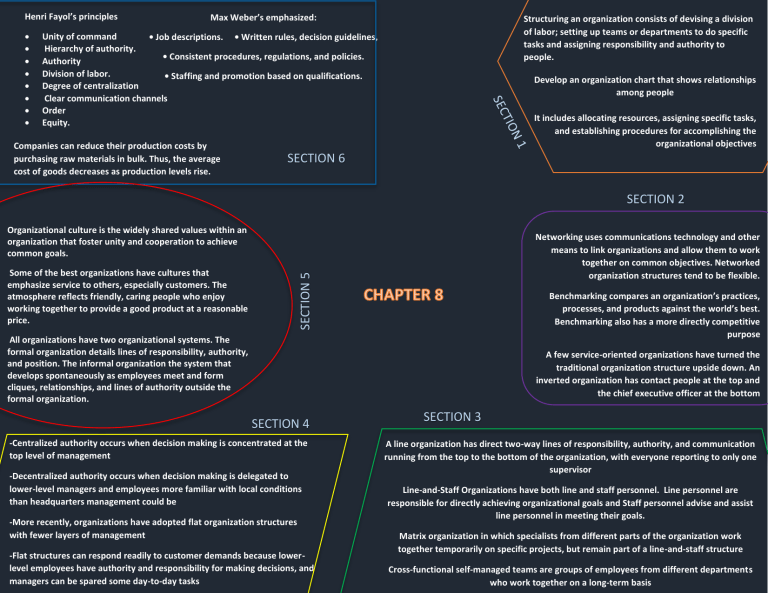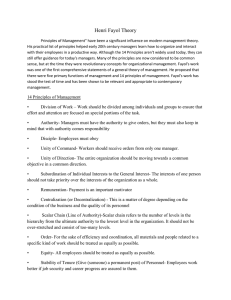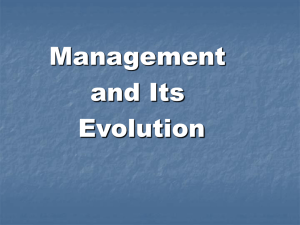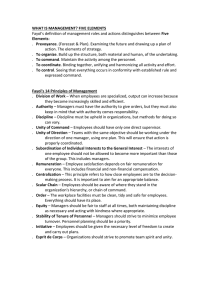
Henri Fayol’s principles Max Weber’s emphasized: Structuring an organization consists of devising a division of labor; setting up teams or departments to do specific tasks and assigning responsibility and authority to people. Unity of command • Job descriptions. • Written rules, decision guidelines, Hierarchy of authority. • Consistent procedures, regulations, and policies. Authority Division of labor. • Staffing and promotion based on qualifications. Degree of centralization Clear communication channels Order Equity. Companies can reduce their production costs by purchasing raw materials in bulk. Thus, the average cost of goods decreases as production levels rise. Develop an organization chart that shows relationships among people It includes allocating resources, assigning specific tasks, and establishing procedures for accomplishing the organizational objectives SECTION 6 SECTION 2 Organizational culture is the widely shared values within an organization that foster unity and cooperation to achieve common goals. SECTION 5 Some of the best organizations have cultures that emphasize service to others, especially customers. The atmosphere reflects friendly, caring people who enjoy working together to provide a good product at a reasonable price. Networking uses communications technology and other means to link organizations and allow them to work together on common objectives. Networked organization structures tend to be flexible. Benchmarking compares an organization’s practices, processes, and products against the world’s best. Benchmarking also has a more directly competitive purpose All organizations have two organizational systems. The formal organization details lines of responsibility, authority, and position. The informal organization the system that develops spontaneously as employees meet and form cliques, relationships, and lines of authority outside the formal organization. A few service-oriented organizations have turned the traditional organization structure upside down. An inverted organization has contact people at the top and the chief executive officer at the bottom SECTION 4 -Centralized authority occurs when decision making is concentrated at the top level of management -Decentralized authority occurs when decision making is delegated to lower-level managers and employees more familiar with local conditions than headquarters management could be -More recently, organizations have adopted flat organization structures with fewer layers of management -Flat structures can respond readily to customer demands because lowerlevel employees have authority and responsibility for making decisions, and managers can be spared some day-to-day tasks SECTION 3 A line organization has direct two-way lines of responsibility, authority, and communication running from the top to the bottom of the organization, with everyone reporting to only one supervisor Line-and-Staff Organizations have both line and staff personnel. Line personnel are responsible for directly achieving organizational goals and Staff personnel advise and assist line personnel in meeting their goals. Matrix organization in which specialists from different parts of the organization work together temporarily on specific projects, but remain part of a line-and-staff structure Cross-functional self-managed teams are groups of employees from different departments who work together on a long-term basis



